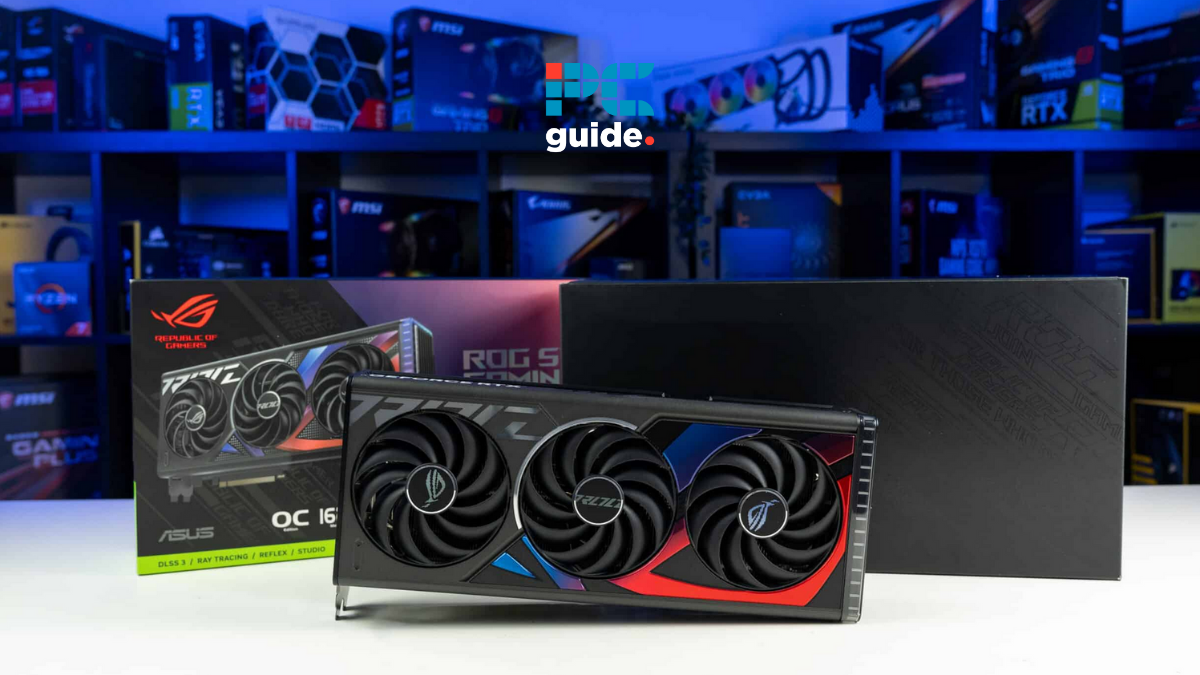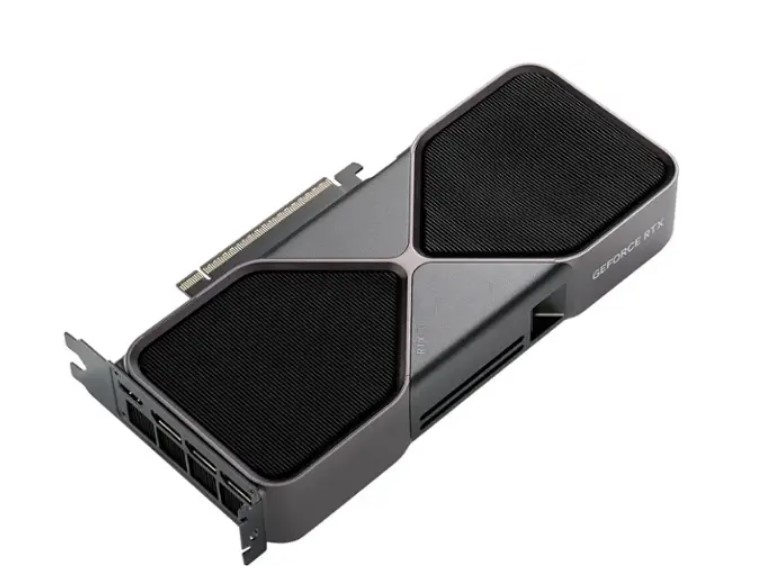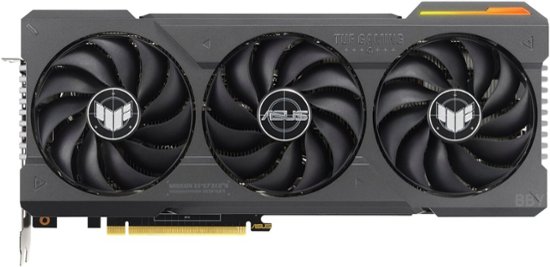RTX 5070 Ti vs RTX 4070 Ti Super specs comparison – how do they differ?

Table of Contents
The RTX 5070 Ti is heading our way and we’re excited to see what the card has instore for us, especially after a particularly strong showing from the 5080 and 5090. The card to beat for the 5070 Ti is obviously the 4070 Ti Super, a card that’s just over a year old at the time of writing. This 40-series card performed well in our testing, scoring a solid 4 out of 5 stars and offering many people a good mi-ground between the 4070 and 4080 in terms of 4K performance.
It’s safe to say that the 5070 Ti will improve upon the 4070 Ti Super, but the question is how much by? Of course, we’ll have to hang tight for performance data before we can wholeheartedly recommend one over the other, but we do have some information to work with which can start us off in the right direction – at least for the time-being.
Prime Day is finally here! Find all the biggest tech and PC deals below.
- Sapphire 11348-03-20G Pulse AMD Radeon™ RX 9070 XT Was $779 Now $739
- AMD Ryzen 7 7800X3D 8-Core, 16-Thread Desktop Processor Was $449 Now $341
- ASUS RTX™ 5060 OC Edition Graphics Card Was $379 Now $339
- LG 77-Inch Class OLED evo AI 4K C5 Series Smart TV Was $3,696 Now $2,796
- Intel® Core™ i7-14700K New Gaming Desktop Was $320.99 Now $274
- Lexar 2TB NM1090 w/HeatSink SSD PCIe Gen5x4 NVMe M.2 Was $281.97 Now $214.98
- Apple Watch Series 10 GPS + Cellular 42mm case Smartwatch Was $499.99 Now $379.99
- ASUS ROG Strix G16 (2025) 16" FHD, RTX 5060 gaming laptop Was $1,499.99 Now $1,274.99
- Apple iPad mini (A17 Pro): Apple Intelligence Was $499.99 Now $379.99
*Prices and savings subject to change. Click through to get the current prices.
Let’s take a look at how the cards stack up side-by-side, and some of the key differences between the them.
Spec comparison
We’ve listed their specifications below to see the hardware difference between the two processors.
| Specifications | RTX 5070 Ti | RTX 4070 Ti Super |
| Cores | 8960 | 8448 |
| Base clock speed | 2.3 GHz | 2.34 GHz |
| Boost clock speed | 2.45 GHz | 2.61 GHz |
| Memory | 16GB GDDR7 | 16GB GDDR6X |
| Memory interface | 256-bit | 256-bit |
| Bandwidth | 896 GB/sec | 672.3 GB/sec |
| TDP | 300W | 285W |
| Power connector | 2x PCIe 8-pin cables or 300 W or greater PCIe Gen 5 cable | 2x PCIe 8-pin cables or300 W or greater PCIe Gen 5 cable |
| Release date | February 2025 | January 2024 |
Memory
Both of these GPUs have the same memory capacity; however, the RTX 5070 Ti features a better memory type, GDDR7. The main difference between GDDR6X and 7 is that the former has a maximum data transfer speed of up to 21Gbps, and the latter bumps it up to 32/Gbps.
What this means that since GDDR7 has a higher bandwidth or speed, it allows the GPU to access and process more data compared to GDDR6X, meaning the 5070 Ti should have a better output compared to the RTX 4070 Ti Super.
This higher capacity for data is important for high-resolution gaming as more bandwidth means high bit rate data can easily be moved and processed without causing a bottleneck. However, it also means enhanced productivity, making these new GPUs better suited for resource-intensive tasks and applications.
Memory interface width
The RTX 5070 Ti has PCIe 5.0 connectivity, while the RTX 4070 Ti Super has PCIe 4.0 connectivity. The PCIe connection determines how fast a GPU can communicate and move data to and from the CPU and memory.
PCIe 5.0 has a 4GB/s per pin speed, which adds up to 64GT/s on an x16 connection, and PCIe 4.0 has a 2GB/s per pin speed, meaning its total bandwidth comes to around 32 GT/s. It might seem like the RTX 5070 Ti has the upper hand, but realistically speaking, GPUs can't even max out the bandwidth with a PCIe 3.0 x 16 connection.
However, the argument can be made that having a better connection and a higher bandwidth overhead sets you up for the future, but that will also cost you more.
Now that we've got this out of the way, the memory interface width means the amount of data a GPU can move to and from its memory, and it is completely internal and isn't affected by the PCIe slot connection, which has plenty of bandwidth to support even the fastest of GPUs.
Both these GPUs can transfer 256 bits of data per clock cycle, meaning regardless of how fast or how much data can be accommodated by the PCIe connection, it won't matter unless the GPU has a high-capacity memory bus. That being said, the RTX 5070 Ti has an 896 GB/sec bandwidth, while the 4070 Ti Super maxes out at 672.3 GB/sec. This is a factor in determining which GPU will perform better, and coupled with the memory advantage of GDDR7, the RTX 5070 Ti should have better output at every resolution, especially 4K since it has less chance of being bottlenecked.
Cores
The RTX 5070 Ti has 8960 CUDA cores, while the RTX 4070 Ti Super has 8448 CUDA cores. This difference of 514 cores might not seem a lot, but when you factor in the architectural changes, this is a significant difference.
The largest die in the Blackwell architecture measures 750mm2, while on Ada Lovelace's side, the biggest die size is 611.2mm2, meaning it is 20% larger. However, according to TechPowerUp, the RTX 5070 Ti has a 378 mm² die size with 45,600 million transistors, while the 4070 Ti Super has a die size and transistor count of 379 mm² 45,900 million transistors, respectively.
This is only a difference of 300 million transistors and shouldn't deal a significant blow to the RTX 5070 Ti, as it has faster memory, higher bandwidth, and improved AI technologies.
Performance
When it comes to the performance of the two cards, we only have the in-house benchmarks of the RTX 4070 Ti Super. We tested a couple of games at different resolutions, but we'll use Cyberpunk 2077 and Doom Eternal as examples, as the former is graphically demanding while the other is very well optimized.
In Cyberpunk 2077, we got 147, 92, and 44 FPS at 1080p, 1440p, and 4K, respectively. This was running at Ultra settings and enabled DLSS 3, ramping up the FPS at 4K to more playable figures.
On the other hand, Doom Eternal ran at 451, 339, and 197 FPS at the same three resolutions, and even with Ray Tracing turned on, we got 324 at 1080p, 239 at QHD, and 145 at 4K. So, there are the numbers that the RTX 5070 Ti has to beat, but we're confident it can, especially with DLSS 4 and Multi-Frame Generation in its arsenal.
We'll add in the performance output of the RTX 5070 Ti when we've reviewed it.
Features
The RTX 5070 Ti has DLSS 4 and Multi-Frame Generation in its corner, making it very difficult for the RTX 4070 Ti Super to beat. To give you an example, I'll leverage the findings from our RTX 5080 review.
In Cyberpunk 2077, we got 72 FPS at 4K, and enabling RT Overdrive tanked the FPS to 19. However, by setting DLSS to Quality mode, the FPS increased to 37, which isn't playable. After that, we set the mode to Performance, and it increased to 58 FPS. With MFG set to 2x, it crossed the 100 FPS mark and landed at 103 FPS.
However, that isn't all; MFG's maximum settings go up to 4x, and at that point, the framerate jumped up to 183 FPS, which is incredible because we went from 19 FPS to 184. Now, the same technology is available to the RTX 5070 Ti, and even if the 4070 Ti Super gets DLSS 4 later on, it won't get MFG, and that is something that will always give the 5070 Ti the upper hand.
RTX 5070 Ti vs. RTX 4070 Ti Super – price comparison
The 5070 Ti will launch with a $749 price tag and the RTX 4070 Ti Super has an MSRP of $799. So, the improvements the RTX 5070 Ti offers make it a much better pick, especially considering the value you're getting.
Also, the variants available for the RTX 4070 Ti Super cost above $1,000, such as the GIGABYTE GeForce RTX 4070 Ti SUPER GAMING OC we found on Newegg with a $1,199 price tag. On Amazon, we found this MSI GeForce RTX 4070 Ti Super for $1,447.90, which doesn't make sense because you could get an RX 7900 XTX for cheaper, and it is a 24GB high-end GPU, with much better performance than the RTX 4070 Ti Super.
How likely it will be to grab an RTX 5070 Ti at MSRP is still up in the air, especially as we may not be getting a Founders Edition of the card, meaning you’ll have to go for the (generally more expensive) AIB models instead. There are also rumors of potential stock issues already starting to come in.
Early impressions
The RTX 5070 Ti seems like the stronger and better card out of the two, and with the improvements in AI that it brings, it should make it very difficult for the RTX 4070 Ti Super to go toe-to-toe with it. Multi-frame generation is a bit of secret weapon for the 50-series as a whole, and it’s likely to help the 5070 Ti pull ahead from the 4070 Ti Super in terms of performance too.
It makes a lot of sense to go for a 5070 Ti over a 4070 Ti Super, given the appealing price-point and extra performance, but manage your expectations come release day – as we think this is going to be a tough card to get a hold of.


